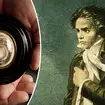Bionic ear tested with Beethoven's 'Für Elise'
4 July 2013, 12:40 | Updated: 4 July 2013, 12:41
Scientists at Princeton University have tested a new bionic ear by playing Beethoven's piano piece 'Für Elise' into it.
The ear, which was created by scientists using a 3D printer, is made of silicone mixed with bovine cells, is capable of picking up radio signals when connected to electrodes.
The team at Princeton, led by Professor Michael McAlpine, broadcast the classic Beethoven piano sonata into a pair of the specially cultivated ears, and the attached electrodes passed the signals to some attached speakers, which played the music clearly.
After initially being created and manufactured with a 3D printer, each ear takes 10 weeks to full cultivate. McAlpine admitted to the , though, that the ear project was not intended to investigate the replacement of human ears: "What we really did here was actually more of a proof of concept of the capabilities of 3-D printing."
"As the world becomes a more digital and electronic place, I think ultimately we're going to care less about our traditional five senses," he continued. "And we're going to want these new senses to give us direct electronic communication with our cellphones and our laptop devices."


























